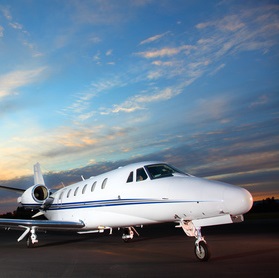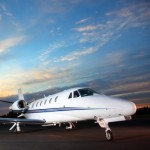How Random Alcohol, Drug Testing Keep Skies Safe

By: Justin Bachman, Insurance Journal, September 2016
Work on—or anywhere near—a U.S. commercial aircraft, and chances are good you’ll encounter a random drug or alcohol test.
These screenings are the foundation of a risk program aimed at keeping substance abuse from compromising air safety. It doesn’t always work, which makes for a minor furor whenever allegedly inebriated crew members turn up. On Saturday, police in Scotland arrested two United Continental Holdings Inc. pilots on suspicion of being drunk before their 9 a.m. flight to Newark Liberty International Airport. The incident came about a month after two pilots for Canadian airline Air Transat were detained on similar charges at the same Glasgow airport before their flight to Toronto.
These were not common occurrences. In the U.S., federal law requires pilots and air traffic controllers have a blood-alcohol level no higher than 0.04 percent, and not have consumed alcohol for at least eight hours before duty. (For automobile drivers, states have legal limits of 0.08 to as high as 0.20 percent.) Last year, only 10 pilots out of 12,480 random tests had alcohol violations above 0.04 percent, according to the Federal Aviation Administration, compared with 13 in 2014 and five in 2013.
The industry reported a total of 56,327 random alcohol screening tests for all classes of eligible employees, including pilots. Of those tested, 119 had a blood-alcohol content of 0.04 or higher.
The reality is that, for pilots, the chance of being caught is always present. Random drug and alcohol testing is a central tenet of the airline industry, with failure to appear for a test in a “reasonable” amount of time grounds for suspension or other disciplinary actions. Random tests subjects also include mechanics, flight attendants, air traffic controllers, and other aviation employees whose roles affect safety. In the case of the two United pilots in Scotland, airline spokeswoman Erin Benson said Monday that the carrier will be conducting its own probe. “The safety of our customers and crew is our highest priority,” she said in an e-mail.
The FAA reviews test results annually to determine how much random drug and alcohol testing will be required for the following year. In 2014, the rate of positive drug tests (PDF) was 0.534 percent; for alcohol it was 0.106 percent. Currently, about one in four “safety-sensitive employees” are randomly tested for drugs annually, and about one in ten are tested for alcohol.
“What makes random testing so effective is the element of surprise,” according to an FAA video that details the program. “Employees never know if or when they will be selected.”
Beyond regulation, unions have also made substance abuse a priority. The largest pilots union, the Air Line Pilots Association, has programs for members “to recognize behavioral issues and provide help, support, and intervention before a problem enters the work place.”
One group, Birds of a Feather, has meetings for pilots modeled after Alcoholics Anonymous, with chapters in the U.S., Europe, Canada, and the Middle East. Another organization formed by the FAA, unions, and airlines, Human Intervention Motivation Study (HIMS), also serves as a substance-abuse treatment program tailored to airline pilots. The group was formed in the mid-1970s and aims to help manage recovery from dependency.
“The HIMS was founded upon the premise that pilot susceptibility to alcohol dependence was no different from members of other professional groups,” the organization says on its website. “However, periodic binges rather than daily drinking were typical pilot drinking patterns. The cockpit was usually the last place for symptoms to manifest themselves.”
Bloomberg
Categories
- Benefits Resources
- Bonding
- BOP
- Business Insurance
- Commercial Auto
- Commercial Property
- Company News
- Construction
- Crime Insurance
- Cyber Insurance
- Directors & Officers
- Employee Benefits
- Employment Practice Liability Insurance
- Entertainment
- General Liability
- Health Insurance
- Healthcare
- Healthcare Reform
- Homeowners Insurance
- Hospitality
- Manufacturing
- Medical Malpractice
- Mining & Energy
- Nightclubs
- Personal Auto
- Personal Insurance
- Professional
- Restaurants
- Retail & Wholesale
- Risk Management Resources
- Safety Topics
- SBA Bonds
- Security
- Seminars
- Technology
- Tourism
- Transportation
- Uncategorized
- Workers Compensation
Archives
- May 2021
- November 2020
- October 2020
- September 2020
- August 2020
- July 2020
- June 2020
- May 2020
- November 2018
- September 2018
- August 2018
- May 2018
- April 2018
- March 2018
- February 2018
- January 2018
- December 2017
- November 2017
- October 2017
- September 2017
- August 2017
- July 2017
- June 2017
- May 2017
- April 2017
- March 2017
- February 2017
- January 2017
- October 2016
- September 2016
- August 2016
- July 2016
- June 2016
- May 2016
- April 2016
- March 2016
- February 2016
- January 2016
- December 2015
- November 2015
- October 2015
- September 2015
- August 2015
- July 2015
- June 2015
- May 2015
- April 2015
- March 2015
- February 2015
- January 2015
- December 2014
- November 2014
- October 2014
- September 2014
- August 2014
- July 2014
- June 2014
- May 2014
- April 2014
- March 2014
- February 2014
- January 2014
- December 2013
- November 2013
- October 2013
- September 2013
- August 2013
- July 2013
- June 2013
- February 2013
- November 2011
- October 2011
- September 2011
- July 2011
- June 2011
- March 2011
- November 2010
- October 2010
- September 2010
- April 2010
- February 2010
- November 2009
- October 2009
- November 2008
- August 2008

